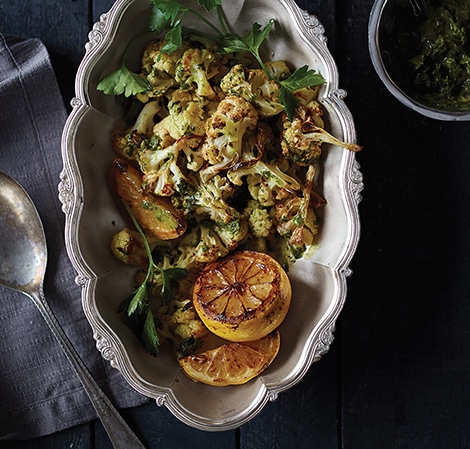Eating paleo is the way humans were genetically designed to eat, according to the diet’s developer, Dr. Loren Cordain. You have chosen to eliminate processed foods and eat a diet rich in nutrients, and as a result, you might be experiencing weight loss, reduced bloating and even higher energy levels. But just because you have adopted this way of eating, doesn't mean you won't miss certain non-paleo foods as ingredients. Learn how to make five common recipes paleo with quick and easy substitutions.
Dough Goes Paleo
Almonds ground in a Vitamix blender stand in for the flour when you bake crackers and cookies. Simply pulse blanched nuts with an egg and a smattering of salt to create a saltine cracker dough. Add raw honey, butter, baking soda and chocolate chips for paleo chocolate chip cookie dough. Purchased almond flour is also an option.
Cauliflower Mimics Grains
Cauliflower’s bland flavor but hefty texture makes it a handy stand-in for grain. Quick pulse raw florets using a low speed in your Vitamix blender or grate by hand using a box grater to create paleo nuggets that work in lieu of non-paleo couscous or cracked wheat in cold salads such as tabbouleh. Steam the crumbles for 7 to 10 minutes, toss with egg whites and salt and roll into a flat disc to create a paleo-friendly crust that you then top with sauce, meats and veggies before baking.
Mashed Cauliflower for Potatoes and Hummus
Steam a whole head of cauliflower and toss liberally with salt and grass-fed, clarified butter before puréeing into a paleo-acceptable side dish that tastes almost identical to mashed potatoes. Butter is dairy, but grass-fed versions are acceptable as a fat on most paleo diets. If you prefer to avoid it altogether, use olive oil. Traditional hummus is made with chickpeas, which are not paleo-acceptable. Instead, whip the plain steamed or roasted cauliflower together with garlic, tahini, olive oil and lemon juice for a paleo hummus that can be used for dipping raw crudité or paleo crackers.
See related recipes
- Non-dairy spread for fruit and paleo pancakes: Raisin-Almond Breakfast Spread
- Paleo-friendly sauce for meats, eggs and steamed vegetables: Avocado Hollandaise
- Paleo Pasta: Zucchini Pasta with Pomodoro Sauce
Related Articles

15 Gluten-Free Vitamix Recipes
Enjoy these homemade, gluten-free recipes for flour, cereal, and quiche.

How to Make Homemade Non-Dairy Nut Milk
Learn how to make homemade nut milk in your Vitamix for a tasty non-dairy alternative.
